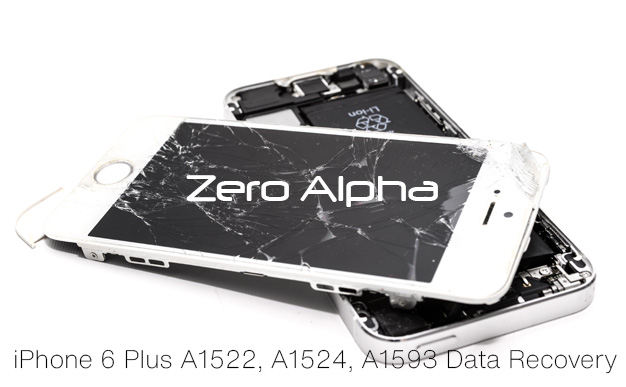iPhone 6 Plus A1522, A1524, A1593 Data Recovery
The iPhone 6 Plus is a popular smartphone model that is known for its large display and powerful performance. The iPhone 6 Plus features a 5.5-inch Retina HD display with a resolution of 1920 x 1080 pixels, which provides crisp and clear images and videos. The iPhone 6 Plus is powered by an Apple A8 chip with 64-bit architecture and an M8 motion coprocessor, which delivers fast and efficient performance. The iPhone 6 Plus comes in three storage options: 16GB, 64GB, and 128GB, which allows users to store a large amount of photos, videos, and other data. The storage capacity is more than sufficient for most users, and it can be expanded further using cloud storage services such as iCloud.

Common Data Recovery problems for the iPhone 6 Plus
Data loss is a common problem that many iPhone 6 Plus users may face. Some of the most common causes of data loss on the iPhone 6 Plus include accidental deletion, water damage, physical damage, software issues, and jailbreaking. Regardless of the cause of data loss, it is important to act quickly to prevent further damage to your device and increase the chances of data recovery. If you suspect that your iPhone 6 Plus has experienced data loss, it is recommended that you stop using the device immediately and seek professional data recovery assistance from Zero Alpha Data Recovery. We offer free assessment where we can analyse the iPhone and quote our competitive price for data recovery.

Data Recovery techniques for iPhone 6 Plus
Once the cause of the data loss is identified, the data recovery service provider will use specialized tools and techniques to recover the deleted files. This may include:
-
Scanning the device's storage: The service provider will use specialized software to scan the device's storage for deleted files. The software will look for any traces of the deleted files and attempt to recover them.
-
NAND Mirroring: If the deleted files are stored on the device's NAND chip, the service provider may use NAND mirroring techniques to recover the data. This involves creating a bit-for-bit copy of the NAND chip, which can then be analyzed and used to recover the deleted files.
-
Chip Level Data Recovery: If the device's logic board is damaged, the service provider may use chip level data recovery techniques to recover the data. This involves removing the chips from the logic board and transferring them to a compatible device for analysis and data recovery.
-
JTAG Data Recovery: JTAG (Joint Test Action Group) is a data recovery technique that involves connecting to the device's circuit board and reading the data directly. This technique is used when other techniques fail to recover the deleted files.



